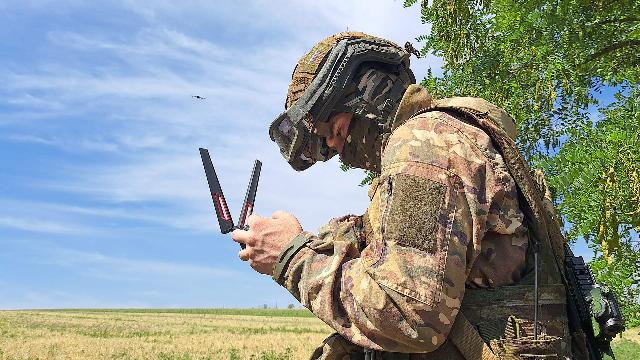The Rusak-S UAV can independently recognize and prioritize targets
Serial production of the Rusak-S FPV drone with artificial intelligence has begun in Russia. He can independently recognize and prioritize goals. The operator of such a device has to choose the right one and give the command to kill. Experts note that tactical UAVs with artificial intelligence are the future, and their use will significantly increase the effectiveness of strikes carried out by drones.
Will distinguish a tank from a gun
The Rusak-S UAV is a quadcopter. It works like a kamikaze carrying 2.5–3 kg ammunition. The flight speed is 80 km / h, during the attack segment — up to 150 km / h.
— With the help of a neural network, the drone is trained to identify heavy, medium armored, as well as wheeled vehicles, artillery and infantry, — a representative of the Stratim developer company told Izvestia. — Next, the operators must select the desired object and give the command to attack. For the last 500-1000 m, when a target is selected and a command is given to defeat it, it can fly offline. This allows you to confidently attack targets outside the radio horizon and bypass the enemy's electronic warfare systems. In offline mode, the drone does not care whether it has a connection with the operator, whether the electronic warfare extinguishes it or not.
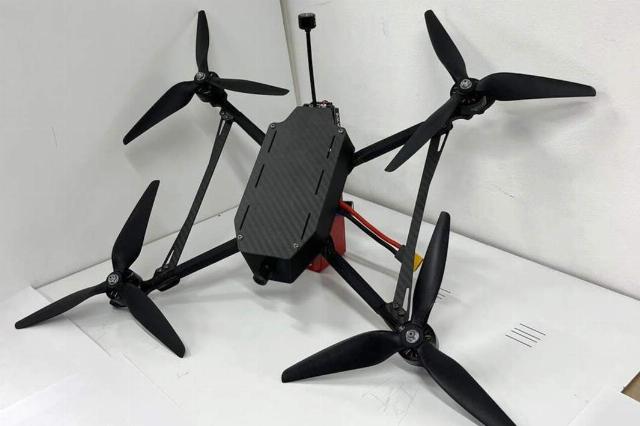
FPV drone "Rusak-S"
Image source: Photo: KB "Stratim"
The developers explain that the Rusak-S is, in fact, a cheap anti—tank guided missile (ATGM) with homing.
— Moreover, unlike the same modern samples of domestic ATGM, it does not need to be driven to the target, — said the representative of Stratim. — There is another plus — it hits the technique in the upper projection — there is the thinnest layer of armor. A large and heavy warhead is not needed to break through it.
The range of the drone is up to 20 km.
— The drone flies much further than a modern ATGM, — the developers note.
Rusak-S can work well on point targets. According to the developer, the operator, with visual contact, can direct the drone directly into the window of the house.
It will save the lives of fighters
Military experts believe that tactical UAVs with artificial intelligence are the future.
— Electronic warfare systems are developing simultaneously with FPV drones, - military expert Yuri Lyamin told Izvestia. — They jam some of the FPV drones, significantly reducing the efficiency of their use. Accordingly, the development of devices with elements of artificial intelligence is underway in different countries, as this will neutralize the operation of electronic warfare. That is, roughly speaking, if the kamikaze drone loses contact with the operator, it will still fly to the target.
The expert notes that such drones will improve the protection of operators. They can be moved away from the front line.
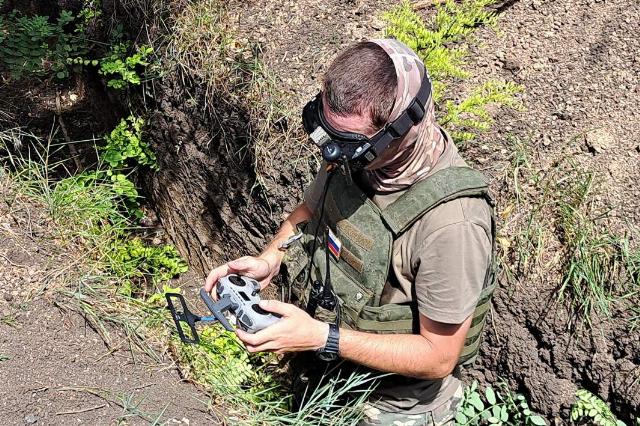
Photo: IZVESTIA/Dmitry Astrakhan
Image source: iz.ru
— Now the operator is constantly monitoring the target, — the expert noted. — During the flight, he does not take off the glasses with which he guides the drone, and in them he sees nothing around him. For the same reason, he is forced to stay in one place. As a result, the operator is extremely vulnerable. If he is discovered while working, he will not be able to do anything. The same 500-1000 m that the drone will go to the target on its own will shorten this time period, which will increase the survival rate of the fighters.
In addition, the operator will be able to prepare the next drone for launch earlier — this will speed up the speed of work, reduce the chances of the next target to escape, that is, improve the effectiveness of the application, Yuri Lyamin noted.
— Now the development of UAVs with elements of artificial intelligence is going on everywhere — in our country, in the enemy, in many countries, — said the expert. — Everyone understands that this type of weapon is the future. And the nearest one.
The Rusak-S is a semi—automatic drone, explained military expert Alexei Leonkov.
"He recognizes the image, and the operator confirms the target and actually solves the issue of using it as a weapon," he told Izvestia. — This direction is more correct than what the Americans are doing. They are trying to create a system of fully autonomous drones and have already stated that they have almost tested several prototypes in Ukraine.
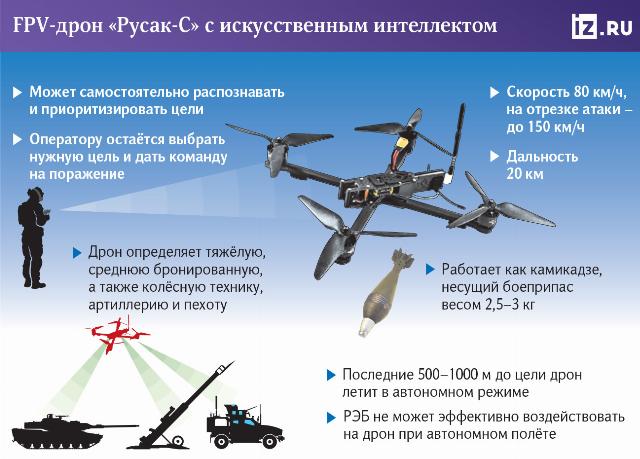
According to Alexey Leonkov, it would be correct to place the recognition system itself on the ground so that the drone simply transmits the image to the ground complex — then it would not be a pity to lose it.
— Such devices are a promising direction that will develop, — he is sure. — I think another direction will develop in parallel — protection against such weapons systems.
Drones on the battlefield
Russia is currently actively working on new drones operating directly on the battlefield. Earlier, Izvestia wrote about the beginning of serial production of the MiS-35 hexacopter.
He can drop ammunition and conduct reconnaissance. In the area of the special operation, where the device was tested, it has already been nicknamed "mini Baba Yaga" for its resemblance to agricultural drones used by Ukrainian armed formations.
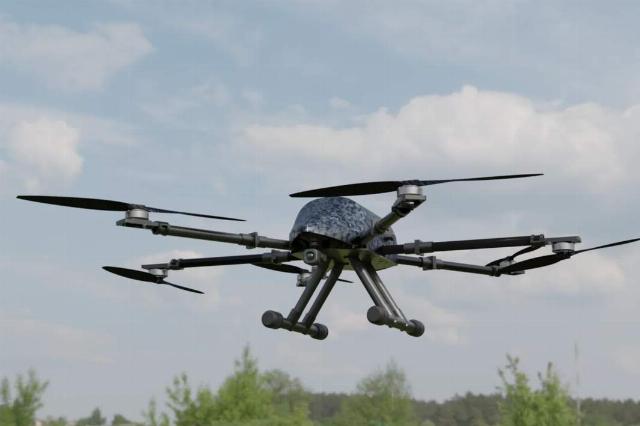
MiS-35
Image Source: Photo: birds-eye.ru
The combat radius of the MiS-35 hexacopter when flying with a load of 3.5 kg is 9 km, with a maximum load capacity of 4.5 kg. In the reconnaissance mission mode, the MiS-35 can stay in the air for up to 45 minutes, in good conditions for 54 minutes. The drone accelerates to 63 km/h.
The main armament is 82 mm mines and shaped charges from RPG—7. Moreover, the drone successfully used many more types of ammunition on the front line.
There is an analog camera with a six—fold zoom on board the MISA. A thermal imager can be used as additional equipment. This allows you to use the device as a scout at any time of the day.
It is extremely difficult to find and detect the MiS-35 — it is almost inaudible in flight. The propeller group consists of highly efficient brushless motors and low-noise composite propellers.
The Guide system allows the UAV to autonomously exit the EW range in the direction of the take-off point without using satellite navigation. This seriously increases the survivability of the UAV.
Bogdan Stepovoy
Andrey Fedorov
